Hey y’all! Officially back with my first on-trail blog post written currently in the morning before hopping back on the trail in Erwin, Tennessee. Since my last email out, I hiked the segment of the trail in Georgia and since then have been meandering through segments in North Carolina and Tennessee (the trail oscillates back and forth between the two, nearly right on the border).
I’ve walked through the ridges of Great Smoky Mountain National Park, had conversations with folks on the trail in shelters, campsites, and while hiking down into valleys, had the first crop of blisters pop up on my ankles (truly inevitable), in the wildlife arena I’ve seen a grand total of 2 deer and one vole (which almost made it’s way into my pack!), weathered a grand total of 3 snow storms, have gradually ramped up my miles/day as the days have went on, and climbed to the highest point of the Appalachian Trail— Clingsman Dome.
In this stretch, I also received a trail name— which for those of y’all less familiar with the eccentric ways of the AT, everyone eventually gets a trail-specific nickname that is used almost everywhere on trail (including making hostel or shuttle reservations!). On my first section that I did on the A.T. in 2018, I got the trail name Butterfly due to being the “social butterfly” of the trail and talking with everyone. This time around, after passing pretty much everyone on every long uphill stretch, I got the trail name Beast Mode which has a much, much different tone than Butterfly! (I credit the amount of biking that I did in DC for the aerobic capacity behind this name!). Other trail names in the group I’m hiking with/around to give you a sense: Frito, Toolman, NASA, Tetris, Nosebleed, Renaissance, Goodall, and Stomps.
For these posts, I’m planning on breaking down a few of my favorite moments, some notable lows, a section generally about the ways of hiking the AT (in this one devoted to what someone brings on trail with them), and then wrapping it with something that I’m been spending my miles walking thinking about and a general photo section. This is the first of these style of posts, so very open to feedback from all of y’all on better ways to structure, questions that you want answered, or anything else! Since it’s long, you’ll likely have to open it up on your browser out of your email.
High Points to Date:
Hiking up Clingsman Dome (literally the highest point on the trail) with a great group of hikers that I’ve been loosely hiking with:
Enjoying the stretch of trail near Fontana Dam, NC and ending the night with a campfire where one of the hikers willing to carry a guitar (imagine carrying that for 2,200 miles!) played songs as we all tried to pretend that it wasn’t freezing cold
When a group of us were attempting to head into Gaitlinburg, TN for a re-supply (when we grab more food to hop back on trail) and we grabbed a ride in the back the truck of someone who’d always wanted to hike the entirety of the AT, probably the best possible way to experience the 15 mile drive through the Smokies into Gatlinburg
Henry (my significant other) drove the ~8 hours from DC to Hot Springs, NC and back to visit me on trail for his birthday which was a certain high point and continues to write me notes daily with encouragement/fun facts/jokes, etc.
My Dad driving to Erwin a day early from Kentucky to rescue me from the second day of a snowstorm after hiking 16 miles through 6 inches of snow (perhaps the best leg workout I've had to date!)
Notable Low Points
Hiking in all conditions for 5-7 months, isn’t all fantastic photo opportunities and great days, so I thought I’d include this section to also be transparent about some of the not-so-great moments on trail as well.
Night 2 on Trail (or otherwise known by other hikers on the trail as the terrible night of March 12th) in Georgia, the temperature dipped to -1 and, according to some people I’ve talked with on the trail, -15 with windchill. The entire day was spent hiking through icy, snowy trail with cold wind gusts interrupting any even short period of warmth. My water froze (so I was wildly dehydrated) and I ate Cliff bars pretty much exclusively to avoid having to take my gloves off. After shivering the entire night, I woke up the next morning to the buckles on my tent rain-fly completely frozen solid to my tent frame— determining after 15 minutes of trying to separate them that the only way to dismantle my tent was to literally melt the muddy ice on the buckles in my mouth, way, way too survivalist for my taste. I’ve learned my limits with cold and that night/day were far below them— that being said, every other day on trail has been comparatively warm!
Only other notable low (it’s been a good time so far) was also temperature related but in the opposite direction, after a few days of warm weather, I developed hives all over my hands due to the heat and sun exposure which gradually escalated over the course of a week until I was having sleepless nights with my hands burning— fortunately I made it to a pharmacy and also picked up some sun gloves, so hopefully that’s in the past!
What I’m Bringing/What Thru-Hikers Bring More Broadly
As mentioned in my first post, I thought I’d include this section generally because it’s one of the questions I get asked the most and perhaps something that as a reader you’ve been curious about too. Note that this list is not nearly exhaustive and won’t include specifically what gear choices I’ve made (but feel free to reply if you are curious about specifically what tent/sleeping pad/etc., if you’re an outdoor gear enthusiast like me!):
Big Four (where most of the weight on your pack comes from)
Backpacking Pack (for those of y’all that have backpacked with me in college or beyond, I’m still using my beloved green Osprey which has lasted me over 5 years, on 5 continents, and likely now has around 1,000 miles on it!)
Tent
Sleeping Pad
Sleeping Bag
Clothes
Pair of pants, belt
Shorts
2 Shirts
Baselayer
Fleece layer
Puffy jacket
Warm hat
Hiking hat
Socks
Sleep shirt
Thermal long underwear
Underwear/sportsbras
Rainjacket
Miscellaneous
Rain cover for my pack
Water filter
Chargers
Handsanitizer, trowel, TP
Headlamp
AT Guidebook
Medkit
Stove, fuel
Pot
Bear Cannister (I’ve converted from bear hang bags to the cannister life and am certain it’s a better option even though it’s heavier!)
Luxury Items I’ve Brought Some Don’t:
Kindle
Journal
Lightweight mug (I need my coffee with my breakfast!)
Handwarmers (I was scarred by a few cold nights!)
Something I’ve Been Thinking About:
To round out this newsletter, I thought I’d end on a general topic that I’ve been spending my miles hiking mulling over— in this case, the topic of pacing.
Over and over in blogs and books on the AT, you hear the same fact: the number one reason why people end up quitting up the trail in the first few weeks is upping their mileage too rapidly, going too fast too quick. After having a few longer days, it’s tempting to dive headfirst into the huge mile days that eventually everyone can tackle on the trail— to show that you’re a real thru-hiker. And yet, pulling a few 16/18/20 mile days too early can be a trail ender. I watched directly as hikers attempted to move fast too early and inevitably got injured with knees blowing out, shin splints, or exhaustion.
Before the trail in a conversation with a friend/former co-worker, Sal, who’s starting his own company, he mentioned a critical question that he intended on bringing up with his future employees— “Could you imagine yourself doing what you’re doing now for 10 more years?” as a way of judging the sustainability of work.
That question is essentially a question about pacing. Biking and running before the trail, I was used to the idea of modulating pace, a 3-mile run can be much faster than a 10-mile run. I asked myself when running or biking if that pace was one that I could continue for the stretch ahead of me in a similar way that I approach the calculus of how much mileage I can handle in a day or week timeframe now. Early on in the trail, you start slow with the intention of building a foundation to later move faster and further.
The concept of thinking of “pacing” is perhaps applied too narrowly to endurance activities like hiking and instead has broader applicability when thinking about how to live life more broadly in a way that takes into account the future as dependent on the velocity of the present. Spending time thinking about how fast and how far to go to set myself up for the entirety of the trail, had made me reflect on the general “pace” of the way that I lived pre-trail both in and outside of work. Is that a pace that can be maintained in 10 years? Am I (or are you) putting the future of the trail in this extended metaphor at risk by moving too fast, too soon?
—
On that last note, I’m about to hop back on trail and greatly appreciate you reading (photos below!)— let me know what questions you want answered, comments you have, or form/structure suggestions for the newsletter moving forward!
Best,
Tierney, with the trailname of Beast Mode now :)









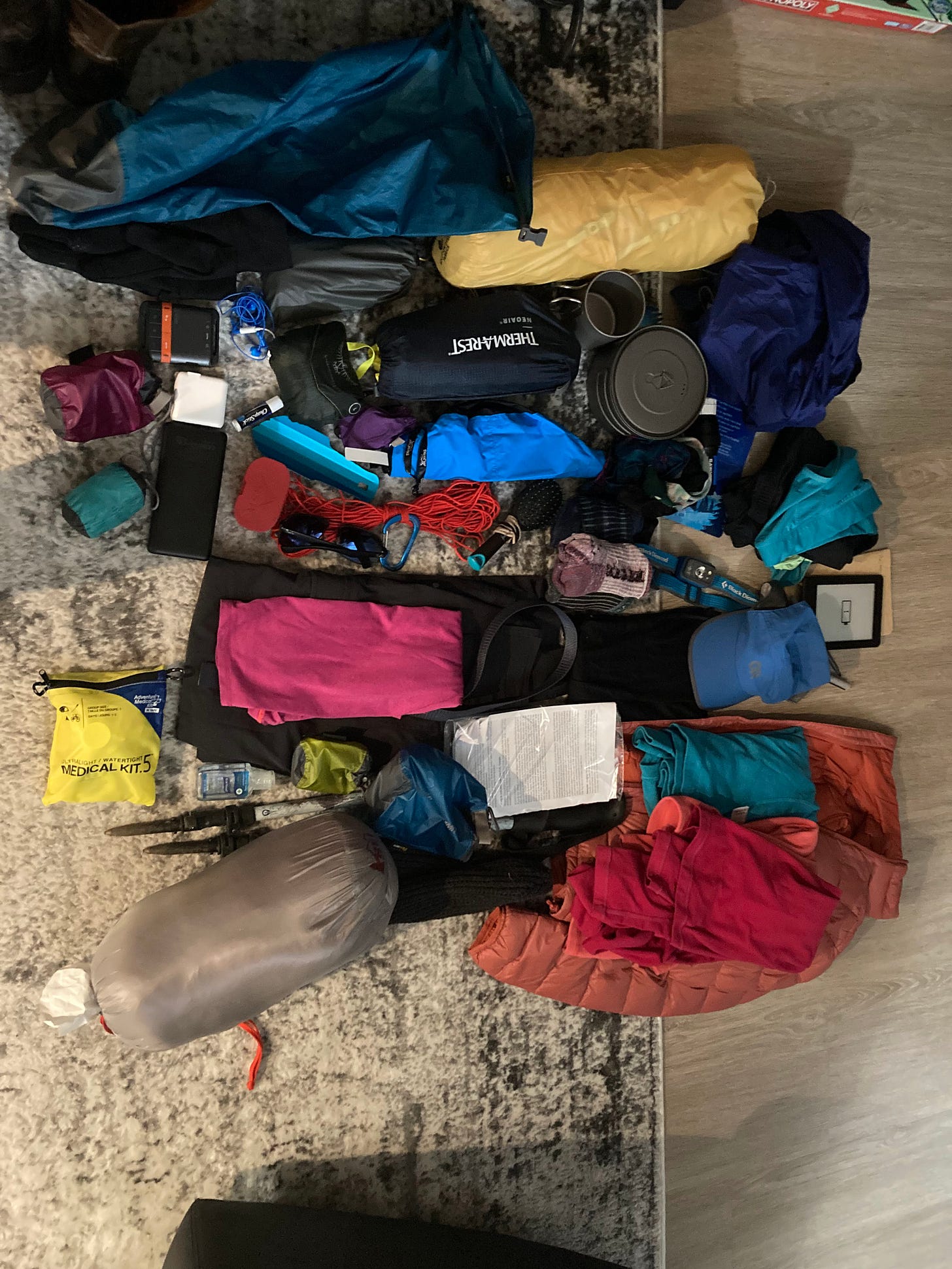
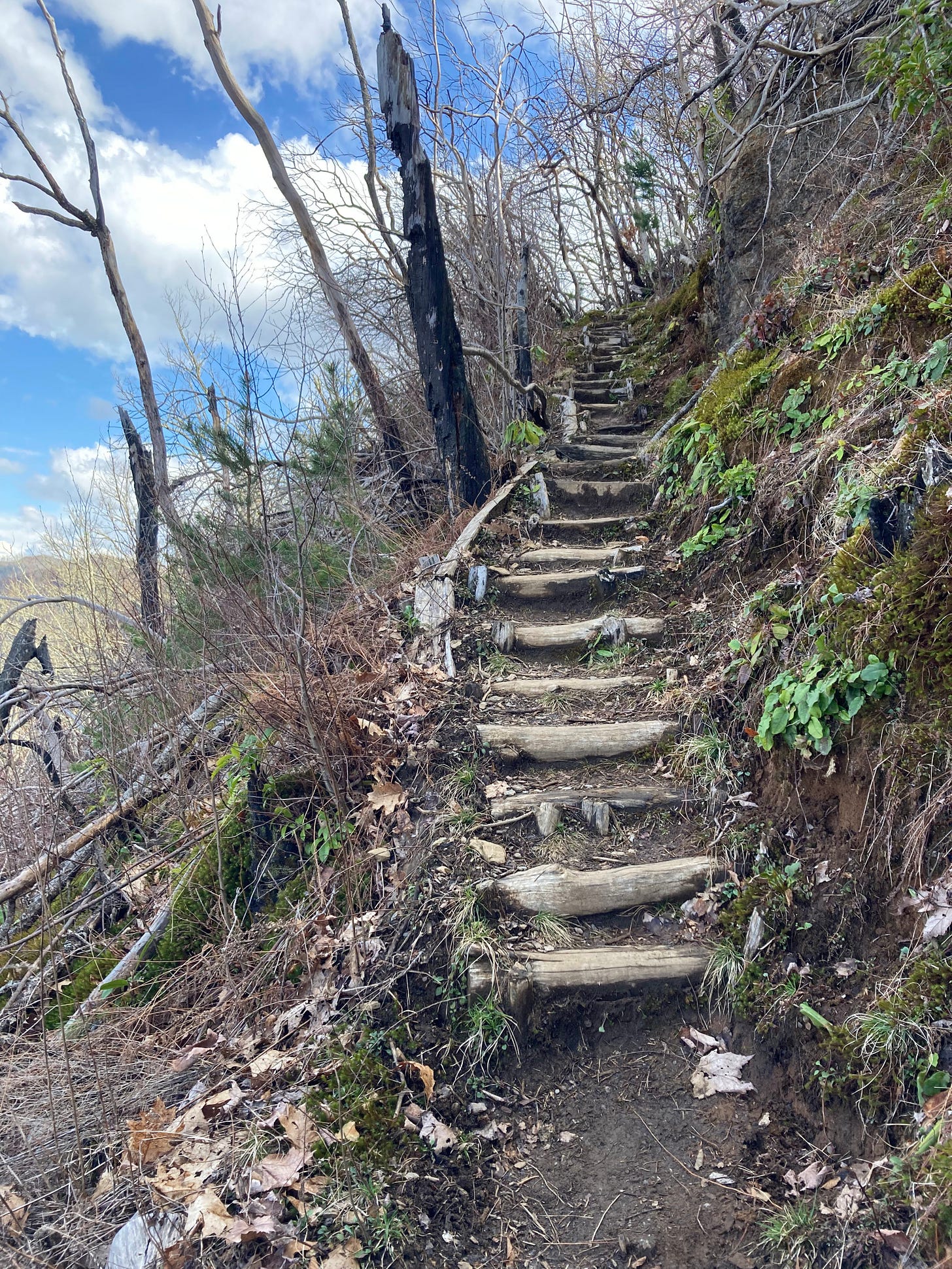
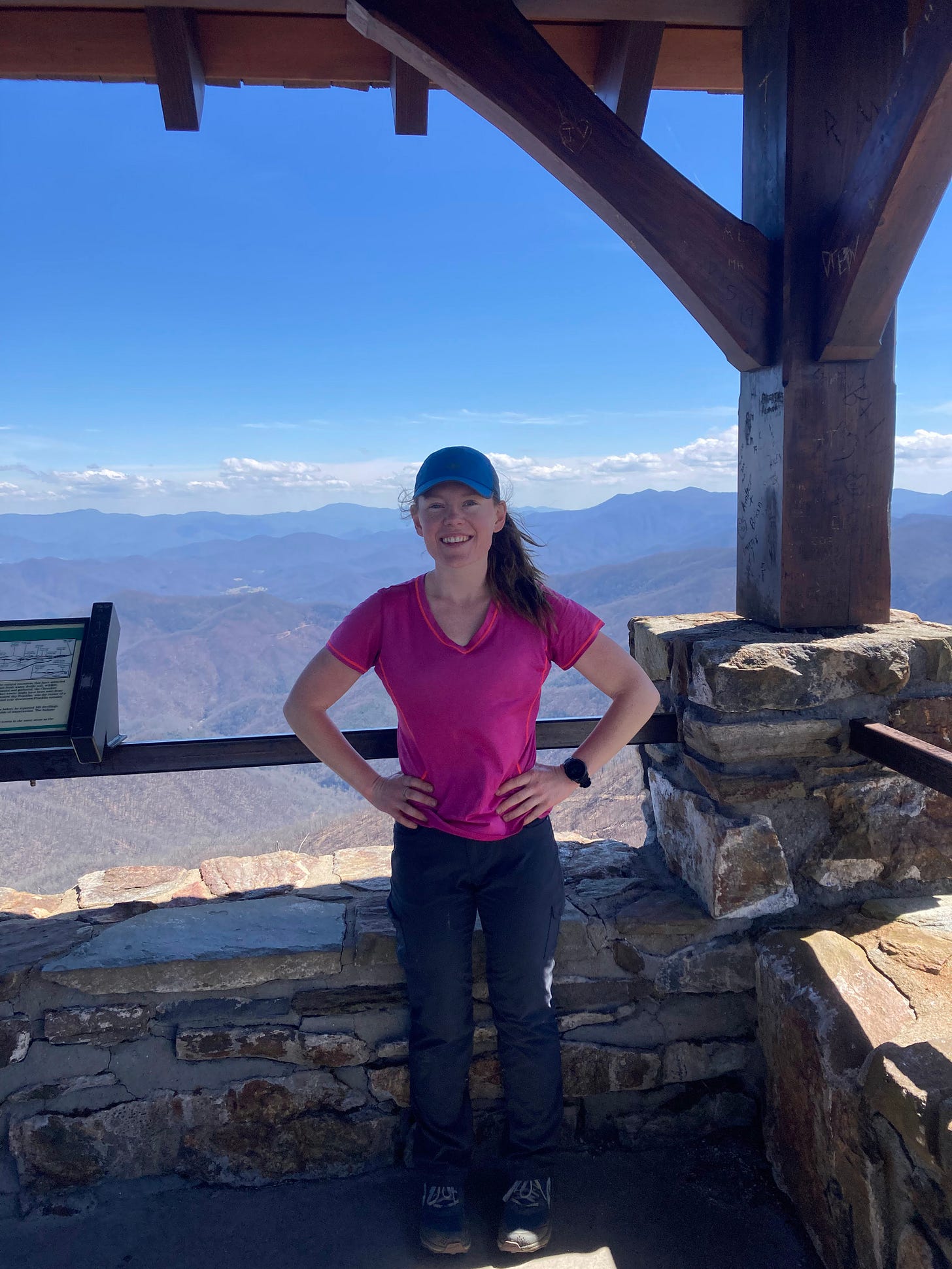




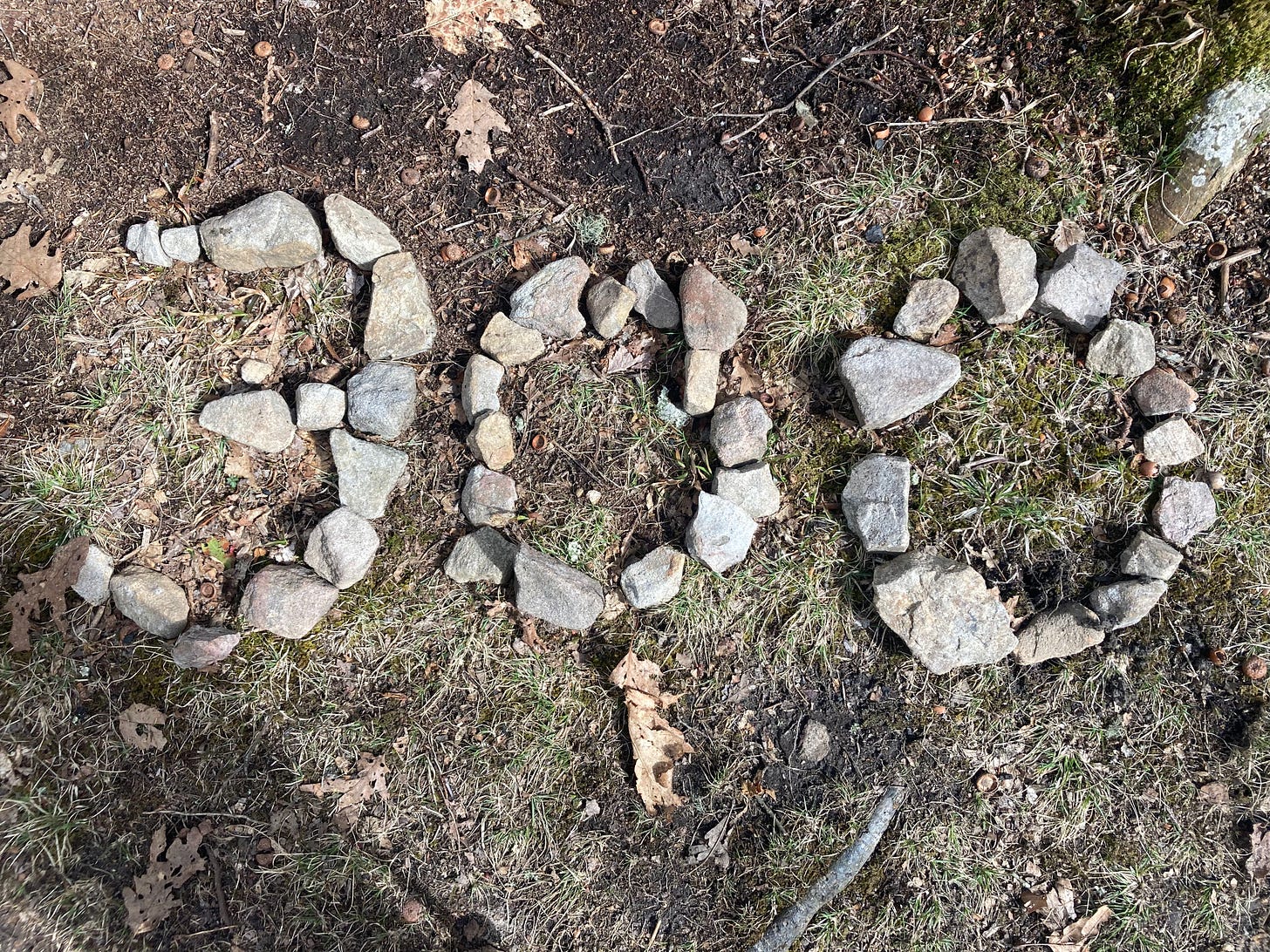

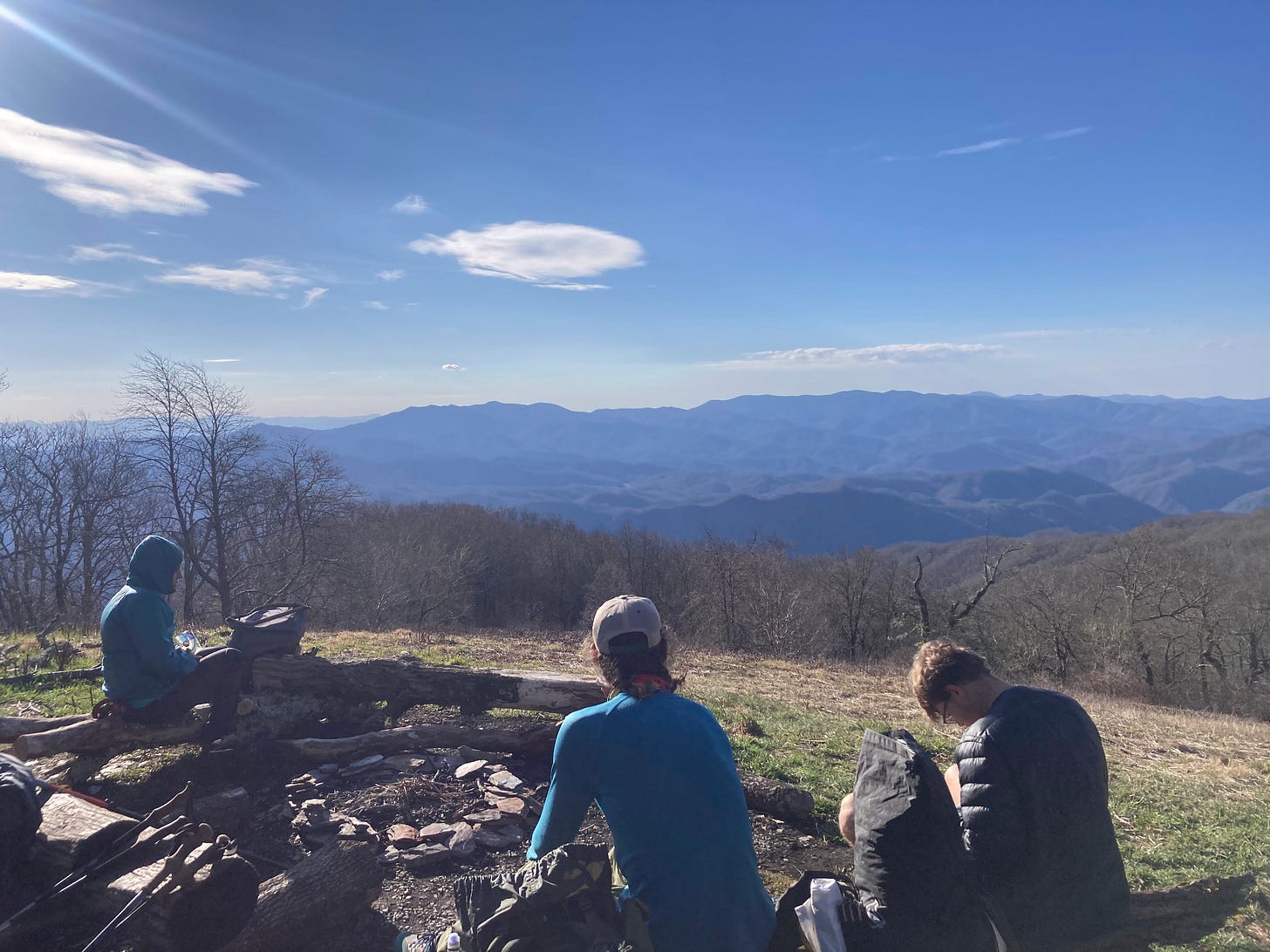
Wow! You earned that trail name for sure, I think you are one amazing woman, hope it’s better weather the rest of your adventure, be careful (mom thing), I am soo proud of you and I love you soo much! Love your mama💕❤️
Here I was thinking I was tough for running through the snow in a race on my birthday (March 12th). "...the only way to dismantle my tent was to literally melt the muddy ice on the buckles in my mouth". These posts are phenomenal Tierney. They are always the highlight of my day! Keep up the great work!